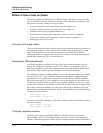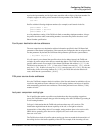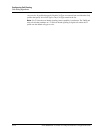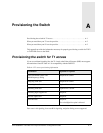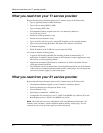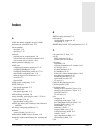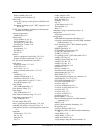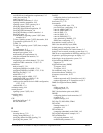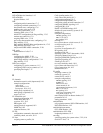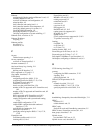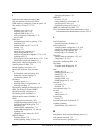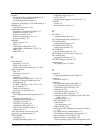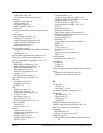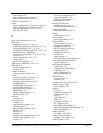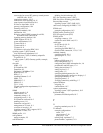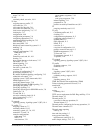
Index-4 APX 8000/MAX TNT/DSLTNT Physical Interface Configuration Guide
DS3-ATM physical interface, 14-2
DS3-ATM port
physical-address
, 14-2
DSL
configuring nailed connections
, 17-5
configuring switched connections
, 17-4
data transfer rates, configuring
, 17-6
enabling only active ports
, 17-4
IDSL voice connections
, 17-17
incoming IDSL voice
, 17-18
MAX TNT configuration for Plug and Play
, 17-15
modem rate control for
, 17-9
outgoing IDSL voice
, 17-18
per-session data transfer rates, configuring
, 17-8
Plug and Play
, 17-12
Plug and Play BOOTP Relay configuration for
, 17-15
Plug and Play overview
, 17-12
sample nailed PPP ADSL connection
, 17-26
DSL cards
authentication of calls
, 17-4
DSLPipe
configuring for ADSL
, 17-28
configuring for SDSL
, 17-33, 17-36
default Plug and Play configuration
, 17-14
Plug and Play
, 17-12
DSX cross-connect
configuring T3 card to connect to
, 11-5
configuring UDS3 card to connect to
, 13-2
specifying line length
, 7-17
E
E1 channels
destination route for calls (deprecated)
, 9-16
example configurations
nailed, 9-16
phone numbers, 9-14
trunk groups, 9-14, 9-15
nailed group, explained
, 9-4
trunk groups, explained
, 9-14
usage
, 9-4, 9-14
E1 FrameLine card
example configuration
, 10-3
Frame Relay and
, 10-2
overview
, 10-1, 10-2
PPP support
, 10-2
routing protocols supported
, 10-2
SNMP and
, 10-2
supported features
, 10-1
E1 line
configuration commands, data trunk
, 18-11
continuity check, two-wire
, 18-11
E1 lines
assigning name to profile
, 9-6
CAS signaling modes
, 9-8
clock source and priority
, 9-13
configuration parameters
, 9-5
configuration requirements
, 9-4
configuring a back-to-back connection
, 9-7
configuring DPNSS signaling
, 9-12
configuring R1
, 9-10
DASS 2 or DPNSS settings
, 9-12
default call route created by system
, 9-16
enabling
, 9-7
example configurations
DPNSS signaling, 9-12
PRI, 9-7, 9-8, 9-9
R2 signaling, 9-11
framing
, 9-7
how system chooses a clock source
, 9-13
overlap receiving on
, 9-13
overview
, 9-2
overview of configuration
, 9-2
R2 signaling
, 9-10
signaling mode
, 9-8
signaling system 7 (SS7) data trunks
, 18-10
specifying channel usage
, 9-14
specifying ISDN PRI signaling for
, 9-12
specifying signaling
, 9-8
switch type
, 9-8, 9-12
two-wire continuity check
, 18-11
type of front-end transceiver
, 9-13
type of transceiver
, 9-4, 9-13
unchannelized
, 9-2
E1 profile
assigning a name to
, 9-6
created by system
, 9-5
created for E1 card
, 9-5
example configurations
DPNSS signaling, 9-12
E1/PRI, 9-7
ISDN service, 9-8
nailed channels, 9-16
phone number assignments, 9-14
PRI, 9-7, 9-8, 9-9
R2 signaling, 9-11
trunk group assignments, 9-15
using trunk groups, 9-14
name displayed in Line Status window
, 9-7
parameters in
, 9-5
setting parameters
, 18-10
enable/disable
cell payload parameter, DS3-ATM interface
, 14-3
DS3-ATM interface
, 14-2
enable/disable parameter
OC3-ATM interface
, 15-2
enable/disable, OC3-ATM
loopback parameters
, 15-2
encoding
specifying analog for system codecs
, 7-22, 9-16
used on T1 lines
, 7-8



